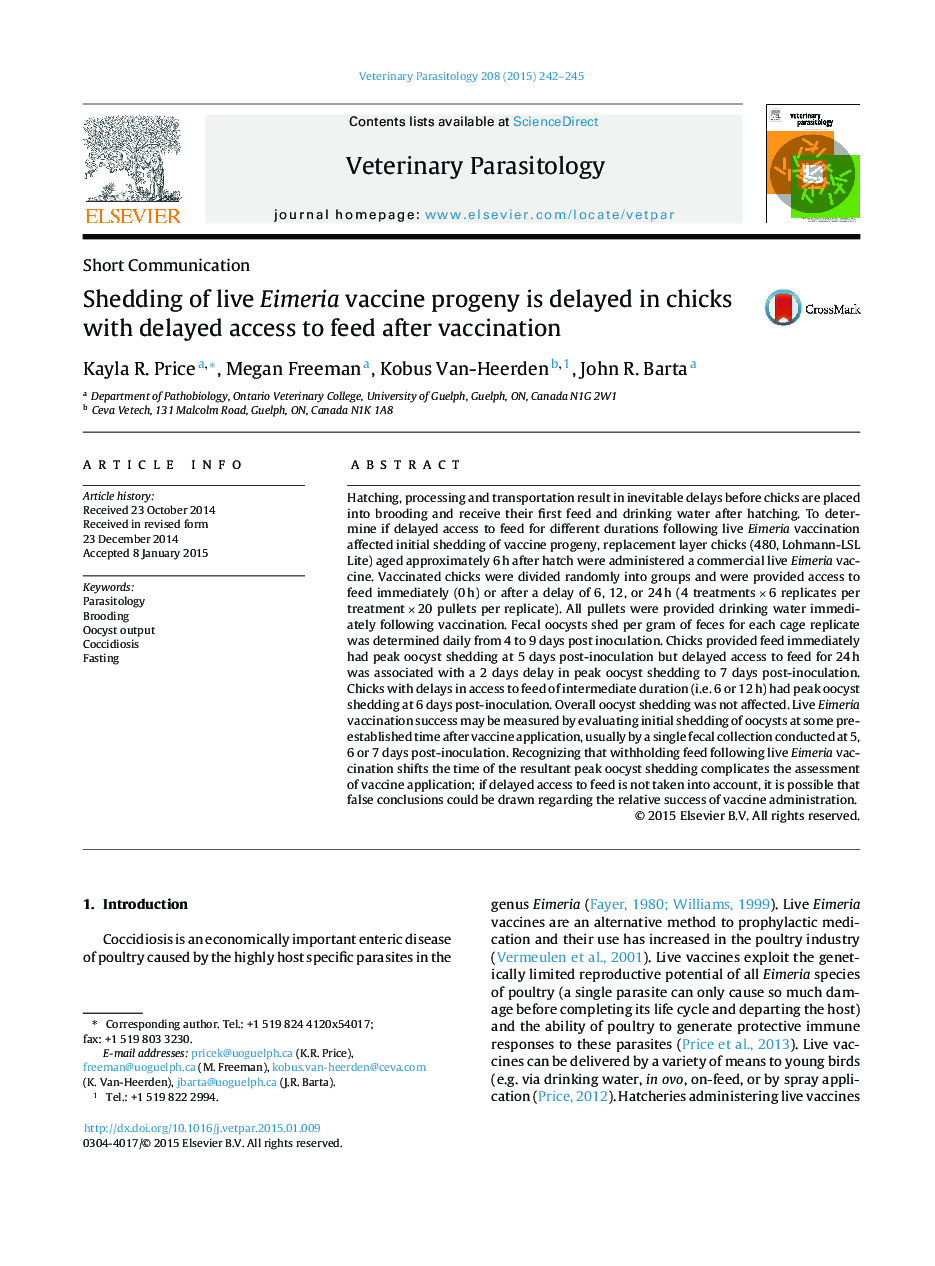| Article ID | Journal | Published Year | Pages | File Type |
|---|---|---|---|---|
| 5802533 | Veterinary Parasitology | 2015 | 4 Pages |
â¢Effect of delayed feeding after Eimeria vaccination on oocyst shedding was tested.â¢Vaccine-derived fecal oocysts shed from 4 to 9 days post inoculation were counted.â¢Delayed access to feed was associated with a delay in peak oocyst shedding.â¢Delayed peak oocyst shedding could complicate vaccine administration evaluation.
Hatching, processing and transportation result in inevitable delays before chicks are placed into brooding and receive their first feed and drinking water after hatching. To determine if delayed access to feed for different durations following live Eimeria vaccination affected initial shedding of vaccine progeny, replacement layer chicks (480, Lohmann-LSL Lite) aged approximately 6 h after hatch were administered a commercial live Eimeria vaccine. Vaccinated chicks were divided randomly into groups and were provided access to feed immediately (0 h) or after a delay of 6, 12, or 24 h (4 treatments Ã 6 replicates per treatment Ã 20 pullets per replicate). All pullets were provided drinking water immediately following vaccination. Fecal oocysts shed per gram of feces for each cage replicate was determined daily from 4 to 9 days post inoculation. Chicks provided feed immediately had peak oocyst shedding at 5 days post-inoculation but delayed access to feed for 24 h was associated with a 2 days delay in peak oocyst shedding to 7 days post-inoculation. Chicks with delays in access to feed of intermediate duration (i.e. 6 or 12 h) had peak oocyst shedding at 6 days post-inoculation. Overall oocyst shedding was not affected. Live Eimeria vaccination success may be measured by evaluating initial shedding of oocysts at some pre-established time after vaccine application, usually by a single fecal collection conducted at 5, 6 or 7 days post-inoculation. Recognizing that withholding feed following live Eimeria vaccination shifts the time of the resultant peak oocyst shedding complicates the assessment of vaccine application; if delayed access to feed is not taken into account, it is possible that false conclusions could be drawn regarding the relative success of vaccine administration.
